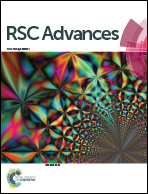The phase evolution, electrical stability and chemical compatibility of sealing glass–ceramics for solid oxide fuel cell applications: effect of La2O3 or CeO2
Abstract
In spite of the fact that rare earth oxides can improve the sealing properties of glass–ceramics, the electrical stability of these glass–ceramics under Solid Oxide Fuel Cell (SOFC) operational conditions still remains ambiguous. In this work, the electrical stability of glass–ceramics doped with La2O3 or CeO2 under SOFC operational conditions has been systematically investigated. The glass–ceramic material with La2O3 dopant exhibits good electrical stability under SOFC operational conditions; whereas, a decrease in the conductivity of the CeO2-containing glass–ceramic material can be related to the formation of a conductive phase, i.e., CeO2. In particular, the relationship between the phase evolution and the change in conductivity of glass–ceramics has been clearly demonstrated. Moreover, the sealing glass–ceramics show good chemical compatibility with 8 mol% yttria-stabilized zirconia (8YSZ) electrolyte, after being held at 750 °C for 1000 hours. The reported results support the suitability of La2O3-containing glass–ceramic as a sealing material for SOFC applications.


 Please wait while we load your content...
Please wait while we load your content...